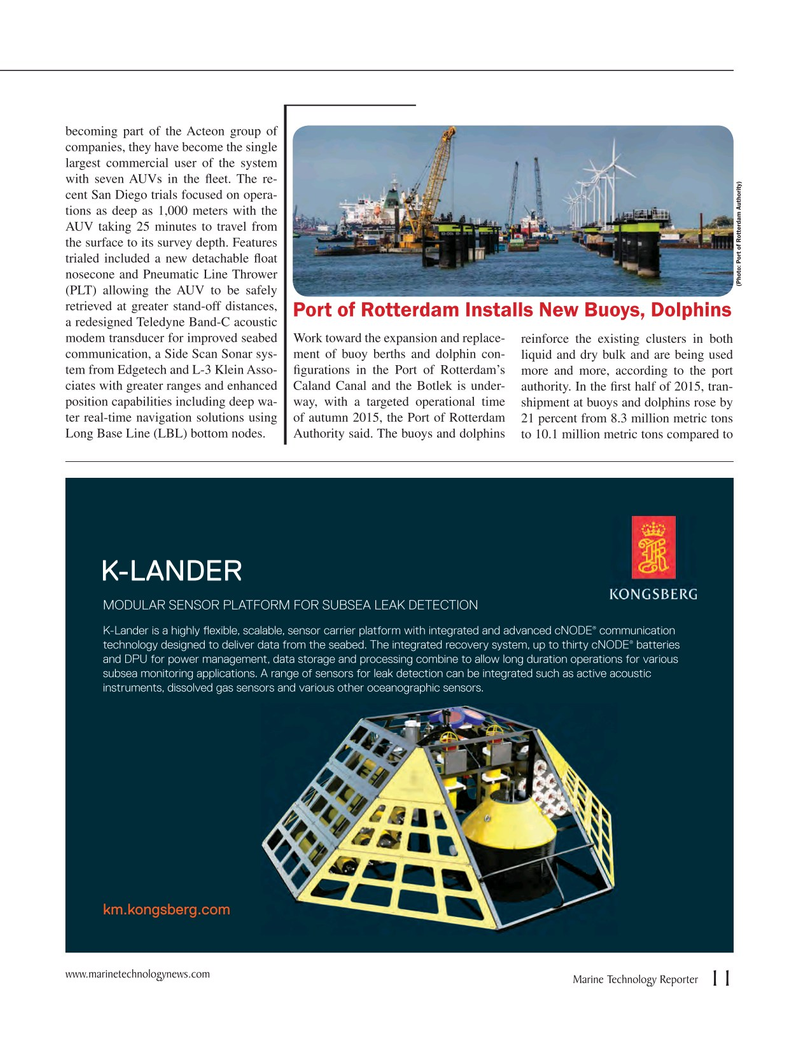
Page 11: of Marine Technology Magazine (September 2015)
Ocean Observation: Gliders, Buoys & Sub-Surface Networks
Read this page in Pdf, Flash or Html5 edition of September 2015 Marine Technology Magazine
becoming part of the Acteon group of companies, they have become the single largest commercial user of the system with seven AUVs in the ? eet. The re- cent San Diego trials focused on opera- tions as deep as 1,000 meters with the
AUV taking 25 minutes to travel from the surface to its survey depth. Features trialed included a new detachable ? oat nosecone and Pneumatic Line Thrower (Photo: Port of Rotterdam Authority) (PLT) allowing the AUV to be safely retrieved at greater stand-off distances,
Port of Rotterdam Installs New Buoys, Dolphins a redesigned Teledyne Band-C acoustic modem transducer for improved seabed Work toward the expansion and replace- reinforce the existing clusters in both communication, a Side Scan Sonar sys- ment of buoy berths and dolphin con- liquid and dry bulk and are being used tem from Edgetech and L-3 Klein Asso- ? gurations in the Port of Rotterdam’s more and more, according to the port ciates with greater ranges and enhanced Caland Canal and the Botlek is under- authority. In the ? rst half of 2015, tran- position capabilities including deep wa- way, with a targeted operational time shipment at buoys and dolphins rose by ter real-time navigation solutions using of autumn 2015, the Port of Rotterdam 21 percent from 8.3 million metric tons
Long Base Line (LBL) bottom nodes. Authority said. The buoys and dolphins to 10.1 million metric tons compared to www.marinetechnologynews.com
Marine Technology Reporter 11
MTR #7 (1-17).indd 11 MTR #7 (1-17).indd 11 9/2/2015 10:34:51 AM9/2/2015 10:34:51 AM

 10
10

 12
12
